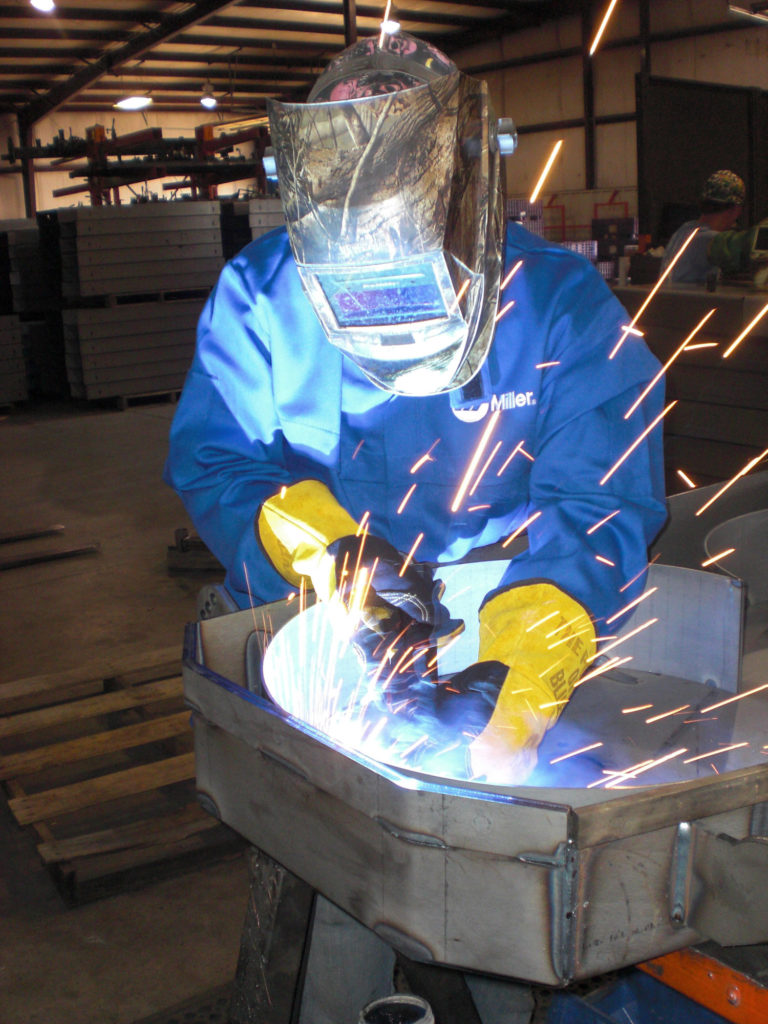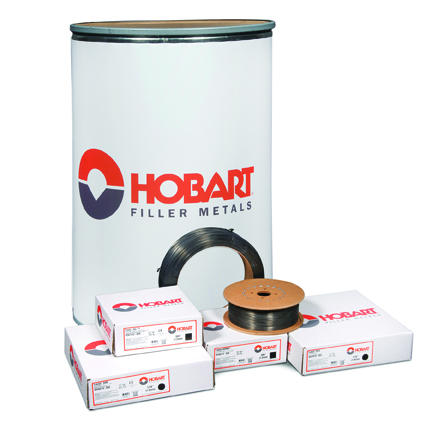7 Key Factors to Consider When Selecting a Filler Metal
Using a filler metal that provides the appropriate mechanical and chemical properties for the job — and is able to withstand the service conditions the weld encounters — is critical. It helps minimize the risk of cracking, corrosion and/or weld defects that could lead to time-consuming and costly rework.
There are seven key factors to consider when selecting a filler metal: the base material to be welded, the welding position, regulatory specifications and codes, design requirements, shielding gas, post-weld heat treatment and welding equipment. Below is a detailed look at each of these factors and how they dictate which filler metal to use.

and chemical properties for the job — and is able to withstand
the service conditions the weld encounters — is critical.
Factor No. 1: The base
material to be welded
Joining together two materials is, for the most part, a matter of chemistry: Which filler metal best matches the base material? If the chemistry of the materials matches, the mechanical properties (such as the tensile and yield strength) will also match. Welding operators can rest assured that their weld deposit will have the same strength and properties as the base material.
When materials being joined are not the same strength, there are other considerations. As a rule of thumb, welding operators should match the strength of the filler metal to the lower strength of the two base materials. During the welding process, dilution from the higher strength base material is sufficient to strengthen the weld metal deposit.
Most base metals can easily be identified through tests based on appearance and reactions to magnets, fracture, chisel, and flames or sparks and a welding operator typically knows what base material he or she is working with. In some cases — usually during repair or rework welding — it may be necessary to take a sample to a lab that can conduct a chemical analysis.
Factor No. 2: The welding position
Whenever possible, welding operators should rotate the part so it can be welded in a flat position. Welding in a flat position is always the most economical, followed by horizontal or vertical and, lastly, an overhead position.
If a welding operator must work with a large weldment that can’t be manipulated, however, it forces the need to weld in multiple welding positions. Out-of-position welding can be especially challenging if there is only one wire size available. For example, a vertical weld up using a 3/32-inch-diameter wire may be extremely difficult or even impossible. A better choice would be a wire ranging from .045 to 1/16 inches in diameter, but it would require setting up an additional wire feeder or another power source for the job. It would also require a change in feed rolls and, potentially, the welding gun. Companies should keep in mind that changing welding positions can slow the process and compromise efficiency, and when possible select a filler metal type and size that will allow for the most versatility.
Factor No. 3: Regulatory specifications and codes
Job specifications often dictate what class of wire to use. If not, welding operators should carefully consider the service requirements the welds may encounter.
For example, if a welding operator uses a mild steel filler metal for applications exposed to harsh elements, it is likely that the welds will rust, deteriorate and corrode at a faster rate than the base material. This action could lead to weld failures, especially if the end product is of critical importance, such as a pressure vessel used in high-temperature environments or a bridge that will be exposed to the elements.
In the end, whatever filler metal a welding operator uses must also meet the service condition of the final product so that the weld deposit lasts as long as the base material. It’s equally important when welding to code that the filler metal should meet the qualifications or certification of that code.
Factor No. 4: Design requirements
In addition to following codes (when required), it is important to select a filler metal that meets or exceeds the needs of a joint design, as specified by the engineer’s welding configuration. For instance, when welding on thin material, it is important that the arc characteristics are appropriate — a wire that provides deep penetration may cause the welding operator to burn through. On the other hand, if the part to be welded is thick and features a single “V” joint, a filler metal with better penetration characteristics allows for better tie-in at the root and sides.
Factor No. 5: Shielding gas
It’s important to ensure the filler metal and shielding gas used for an application are compatible. Different shielding gases have different effects on filler metal. For example, the addition of argon to CO2 allows the welding operator to transfer more of the filler metal’s chemistry into the weld deposit. This mixture provides consistent weld quality, offers good weld pool control and generates lower levels of spatter. However, by transferring a richer chemistry from the filler metal into the weld deposit, it also increases the risk of potential cracking.

If not, welding operators should carefully consider the
service requirements the welds may encounter.
Conversely, using CO2 (an oxidizing gas) burns off some of the filler metal elements. 100 percent CO2 offers the advantage of deep weld penetration, which is desirable when welding thicker materials. It tends, however, to have larger ball transfer and can create more spatter than shielding gas mixtures that are a combination of Argon and CO2.
There are wires capable of operating with both straight CO2 and an argon/CO2 mixture. Companies should consider their available gas supply and desired weld characteristics provided by each when choosing a filler metal, and make sure that the selected filler metal is compatible with the shielding gas chosen.
Factor No. 6: Post-weld heat treatment
There are certain steels and material thicknesses that must be preheated to a certain temperature before welding commences. Preheating allows the part to cool down at a slow rate to avoid weld-shrinking issues and cracking. Similarly, post-weld heat treatment (PWHT) is used to reduce the stresses and slowly lower the residual heat introduced during welding, allowing the weld joint and base materials to return to the desired properties. On materials that require PWHT, it is important to select a filler metal capable of producing welds that respond appropriately to the application of heat.
Factor No. 7: Welding equipment
The type and size of equipment being used impacts what filler metal is best for the job. Specifically, the power source needs to provide enough amperage for the diameter of wire being used for the job. In the event that there is not enough amperage, it will be necessary to change wire diameters, which could result in slower production to complete the weld, or change to a higher-capacity machine. It’s also important for the power source to offer the proper welding current for the filler metal chosen. Welding in the wrong current can lead to spatter and poor weld quality.
Determining the desired weld characteristics is equally important. Filler metals that operate on reverse polarity (electrode positive, or EP) provide great penetration, while straight polarity (electrode negative, or EN) filler metals produce a more shallow joint penetration.
Conclusion
Although the effect of various elements in filler metals can be rather complex and inter-related, a review of their general properties can also help welding operators determine which filler metal is ideal for the job.
Carbon, for example, generally increases hardness, tensile strength and wear resistance, but decreases ductility, impact and machinability. Nickel, on the other hand, increases hardness, tensile strength, impact and ductility, but decreases the part’s ability to be machined. Similarly, there are various alloying elements that have different properties to deoxidize, refine grain structures or improve ductility. It is important for welding operators to consider the properties needed in a completed weld when making the filler metal selection.
For additional information about welding metallurgy and how to select the best filler metal, consult your local welding equipment distributor or a trusted filler metal manufacturer.



